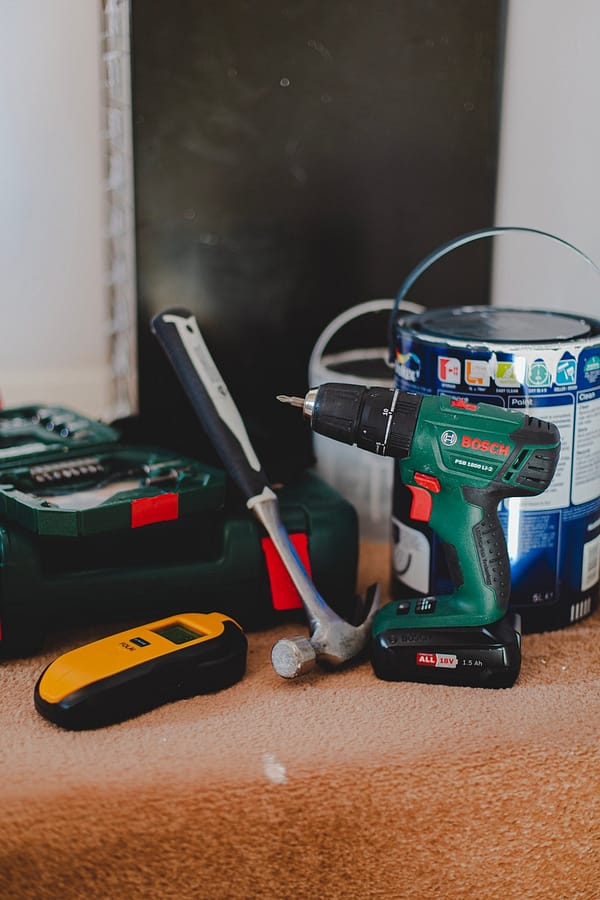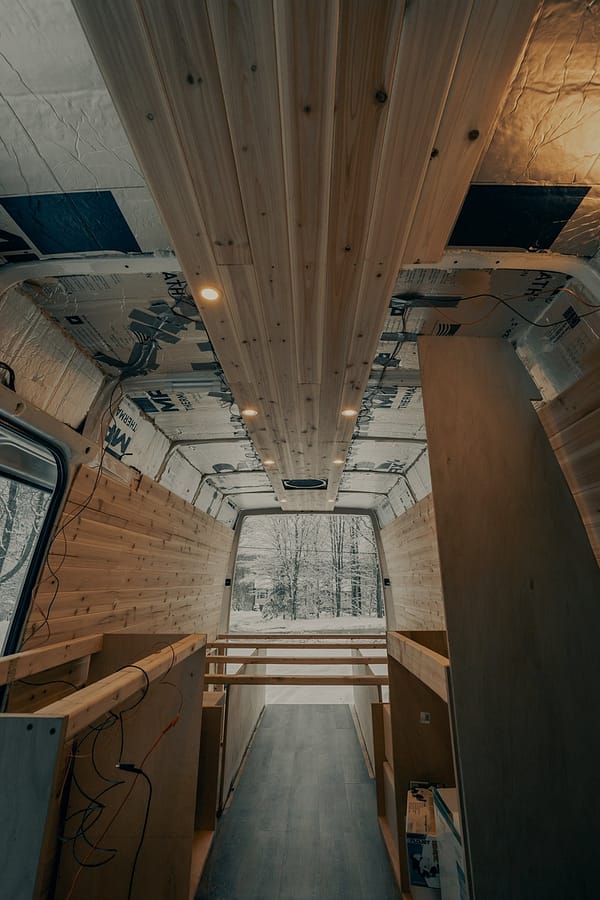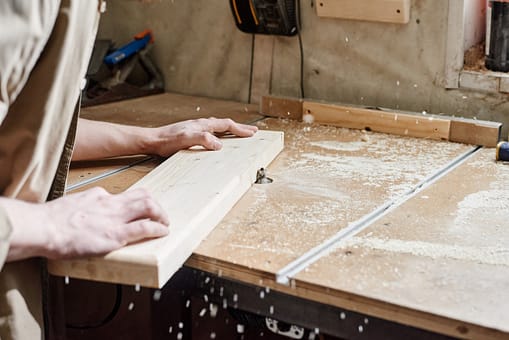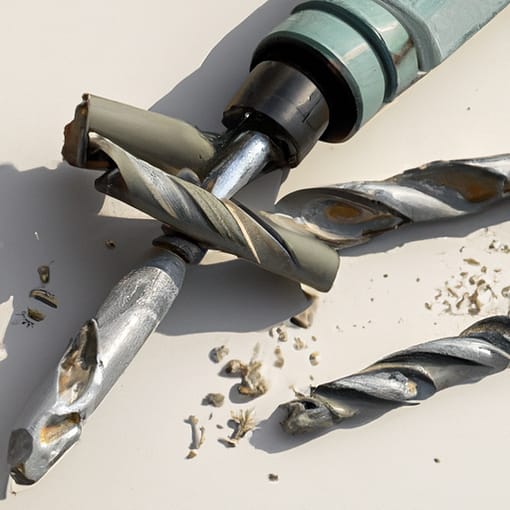So, you’ve got the desire to unleash your creativity and take on some DIY projects, but you’re feeling a bit overwhelmed on where to begin? Look no further, because “How Do I Get Started With DIY Projects?” is here to help you navigate the exciting world of do-it-yourself projects! Whether you’re a complete beginner or just need some fresh inspiration, this product provides you with all the guidance and tips you need to confidently embark on your own creative journey. From choosing the right tools to mastering basic techniques, this resource is your go-to companion for turning your ideas into tangible works of art. So, grab your hammer and let’s get started!

1. Assessing Your Interests and Skills
Identify your interests
Before diving into the world of DIY projects, it’s important to first identify your interests. Think about what sparks curiosity and excitement in you. Are you interested in woodworking, home decor, or perhaps upcycling old furniture? Identifying your interests will help you stay motivated and engaged throughout your DIY journey.
Evaluate your skills
Once you have a good sense of your interests, it’s time to evaluate your skills. Take a moment to reflect on your past experiences and determine what you already excel at. Are you naturally good at painting or have a knack for fixing things? Knowing your existing skills will help you choose projects that align with your capabilities.
Consider your available time and resources
Time and resources play a crucial role in the success of any DIY project. Consider the amount of time you can realistically dedicate to your projects. If you have limited time, starting with smaller projects might be a better fit. Additionally, think about the resources you have available. Do you have access to a workshop or tools? Understanding your time and resource constraints will help you set realistic expectations for your DIY endeavors.
2. Planning and Brainstorming Project Ideas
Research different DIY project options
Once you have a clear understanding of your interests, it’s time to research the vast array of DIY project options available. Look for inspiration in books, magazines, and online platforms. Explore different categories, such as woodworking, sewing, or gardening, to discover projects that align with your interests.
Consider your budget and resources
While brainstorming project ideas, it’s essential to consider your budget and available resources. Some projects may require specialized tools or expensive materials, so it’s important to evaluate what you can afford. If you’re on a tight budget, consider starting with projects that utilize materials and tools you already have or opt for cost-effective alternatives.
Gather inspiration from various sources
Inspiration can be found in numerous places, so don’t limit yourself to one source. Browse through Pinterest boards, visit local craft stores, or even take a walk in nature to find inspiration for your DIY projects. Keep a notebook or use a digital tool to gather all your ideas in one place, making it easier to visualize and plan.
Create a project wishlist
As you gather inspiration, create a project wishlist. Write down the projects that resonate with you the most. This wishlist will serve as a reference point when deciding which projects to tackle first. It’s important to prioritize and choose projects that align with your current skill level and available resources.
3. Gathering Necessary Tools and Materials
Identify the tools and materials needed
Once you’ve decided on a project, it’s time to identify the tools and materials required to bring your vision to life. Research the specific tools needed for your chosen project and make a list. Consider whether you’ll need measuring tools, power tools, or even a sewing machine. Additionally, determine the materials required, such as wood, fabric, or paint.
Check your existing supplies
Before rushing out to purchase new tools and materials, take inventory of what you already have. You might be surprised to find that you already possess some of the necessary items. This step will help you save money and avoid cluttering your workspace with duplicate or unnecessary tools.
Make a shopping list
After evaluating your existing supplies, create a shopping list for the tools and materials you still need. Be specific in your list to ensure you don’t forget any crucial items. Additionally, consider where you can find these items. Local hardware stores, online retailers, or even second-hand shops can be great places to source your DIY materials.
Research where to source materials
Finding the right materials for your DIY project can sometimes be a challenge. Take the time to research different suppliers and compare prices. Look for recommendations from experienced DIYers or check online reviews to ensure you’re getting quality materials. Consider supporting local businesses whenever possible, as they often have unique and sustainable options.
4. Acquiring Basic DIY Skills
Start with simple projects
Building DIY skills takes time and practice, so it’s important to start with simple projects. Choose projects that align with your current skill level and gradually increase the complexity as you gain more experience. Starting small will also help build your confidence and motivate you to take on more challenging projects in the future.
Learn essential safety precautions
Before embarking on any DIY project, it’s crucial to prioritize safety. Familiarize yourself with essential safety precautions for each specific project type. This includes wearing protective gear, using tools correctly, and working in a well-ventilated area. Take the time to research and understand safety guidelines to ensure a safe and enjoyable DIY experience.
Practice using basic tools
If you’re new to DIY projects, it’s important to familiarize yourself with basic tools. Take the time to practice using tools such as a hammer, drill, or sewing machine before starting your project. This will help you feel more comfortable and confident when using them during your actual DIY projects.
Take advantage of online tutorials or workshops
The internet is a goldmine of DIY resources, including online tutorials and workshops. Utilize these resources to expand your knowledge and learn new skills. Websites like YouTube, Skillshare, or even DIY blogs offer step-by-step instructions and tips from experienced DIYers. Take advantage of these resources to enhance your DIY skills and explore new project ideas.

5. Setting Up a Workspace
Designate a specific area for your projects
Having a dedicated workspace for your DIY projects is essential. Designate a specific area in your home or garage where you can work freely without distractions. This will help you stay organized and focused on your projects.
Organize your tools and materials
To work efficiently, it’s important to keep your tools and materials organized. Invest in storage solutions like shelves, drawers, or toolboxes to keep everything easily accessible and in its place. Proper organization will save you time and prevent frustration when searching for specific tools or materials.
Ensure proper lighting and ventilation
Good lighting and ventilation are often overlooked but play a significant role in creating a comfortable and safe working environment. Ensure your workspace is well-lit, both naturally and with artificial lighting. Additionally, maintain proper ventilation by opening windows or using fans when working with chemicals or generating dust.
Make your workspace comfortable and functional
Lastly, make your workspace comfortable and functional. Consider adding a workbench or table that is at a suitable height for your projects. Have a comfortable chair and sufficient space to move around. Furthermore, ensure you have easy access to power outlets for tools that require electricity. A comfortable and functional workspace will enhance your overall DIY experience.
6. Exploring DIY Communities and Resources
Join local DIY groups or clubs
Connecting with like-minded individuals is a fantastic way to enhance your DIY journey. Join local DIY groups or clubs to meet and interact with fellow DIY enthusiasts. These communities often organize workshops, swap meets, or shared tool libraries, providing valuable opportunities to learn, collaborate, and share resources.
Attend workshops or classes
To further expand your skills and knowledge, consider attending workshops or classes. Many community centers, craft stores, or even online platforms offer DIY workshops that cater to different skill levels. Participating in these classes will not only teach you new techniques but also allow you to connect with experienced instructors and fellow learners.
Utilize online DIY forums and websites
The internet is a treasure trove of DIY resources, including forums and websites dedicated to DIY enthusiasts. Engage in online DIY forums to seek advice, troubleshoot problems, or simply connect with others who share your passion. Explore informative websites that offer project ideas, step-by-step guides, and a wealth of knowledge from experienced DIYers.
Follow DIY influencers and content creators
Social media platforms have become a hub for DIY influencers and content creators. Follow individuals who share valuable DIY tips, project ideas, and inspiration on platforms like Instagram, TikTok, or Pinterest. Engaging with these creators will keep you motivated, informed, and connected within the DIY community.
7. Starting Small and Gradually Scaling Up
Begin with manageable and less complex projects
As mentioned earlier, starting small is key to building your DIY skills and confidence. Begin with projects that are manageable and less complex. This could include simple woodworking projects, basic sewing projects, or even small home decor upgrades. By mastering the fundamentals and gradually increasing the complexity, you’ll be better equipped to tackle larger projects down the line.
Focus on learning and improving with each project
Each DIY project is an opportunity for growth and learning. Approach each project with a mindset of continuous improvement. Reflect on your successes and challenges, and identify areas for improvement. Whether it’s refining your woodworking techniques or experimenting with different painting styles, focus on learning something new and expanding your skillset with each project you undertake.
Experiment with various techniques and styles
Embrace the creative freedom that DIY projects offer by experimenting with various techniques and styles. Don’t be afraid to try new things and step out of your comfort zone. Explore different painting techniques, mix and match materials, or incorporate unique design elements. By embracing experimentation, you’ll discover your own artistic flair and develop a personal style in your DIY projects.
Gradually take on more challenging projects
Once you’ve gained confidence and experience through smaller projects, it’s time to gradually take on more challenging ventures. As you expand your skills, consider tackling larger furniture builds, intricate sewing projects, or complex home renovations. Remember to always take sufficient time to plan, research, and gather the necessary tools and materials before diving into more demanding projects.
8. Seeking Guidance and Collaboration
Reach out to experienced DIYers for advice
Don’t hesitate to reach out to experienced DIYers for advice and guidance. Whether it’s a family member, friend, or someone you’ve connected with through DIY communities, experienced individuals can provide valuable insights and offer solutions to challenges you may face. Their expertise can help you troubleshoot problems, provide recommendations, and inspire you to take your projects to the next level.
Consider partnering or collaborating with others
Partnering or collaborating with others can bring a unique dynamic to your DIY projects. Find someone with complementary skills or interests and work on a joint project together. This collaboration will not only enhance the outcome but also create an opportunity to learn from one another and share ideas. It’s a great way to foster creativity, build connections, and strengthen your DIY community.
Ask for feedback on your projects
Feedback is vital to improving your DIY skills. Share your completed projects with friends, family, or members of DIY communities and ask for their honest feedback. Constructive criticism will help you identify areas of improvement and gain fresh perspectives on your work. Embrace feedback as an opportunity to grow and refine your craft.
Attend DIY workshops or classes
Continuing education is important in any field, and DIY projects are no exception. Attend DIY workshops or classes led by experienced instructors to refine your skills and gain inspiration. Workshops offer hands-on learning experiences, allowing you to receive personalized guidance and acquire new techniques to apply to your future projects.
9. Troubleshooting and Problem-Solving
Prepare for potential challenges
DIY projects often come with their fair share of challenges. Prepare yourself mentally by acknowledging that not everything may go as planned. Anticipate potential issues that may arise during the project and plan accordingly. By being prepared, you’ll be better equipped to handle any setbacks or obstacles that may come your way.
Research common DIY project issues and solutions
To navigate challenges effectively, take the time to research common DIY project issues and their possible solutions. There are countless online resources and forums where DIY enthusiasts share their experiences and troubleshoot problems. By educating yourself on common pitfalls and solutions, you’ll be able to solve problems more efficiently and minimize frustration.
Stay calm and patient when facing difficulties
It’s important to maintain a calm and patient mindset when facing difficulties during a DIY project. Frustration and impatience can often lead to rushed decisions or mistakes. Take a step back, assess the situation, and approach the problem with a clear mind. Remember, problem-solving is a valuable skill that will improve with practice and experience.
Seek help and guidance when needed
When all else fails, don’t hesitate to seek help and guidance. Reach out to professionals, experienced DIYers, or even online communities for assistance. Rather than getting discouraged by obstacles, view them as an opportunity to learn and grow. Seeking help not only provides solutions but also fosters a sense of community and support within the DIY world.
10. Celebrating and Sharing Your Achievements
Take pride in your completed projects
Completing a DIY project is an accomplishment worth celebrating. Take a moment to appreciate the effort, time, and creativity you’ve invested in bringing your vision to life. Admire your handiwork and reflect on the skills you’ve developed throughout the process. Taking pride in your completed projects will boost your confidence and inspire you to tackle even more ambitious endeavors.
Share your work with friends and family
Sharing your DIY projects with friends and family is a wonderful way to showcase your talent and receive recognition for your hard work. Invite loved ones to admire your creations and share the story behind each project. Their support and encouragement will motivate you to continue pursuing your DIY passion.
Document and showcase your progress
Documenting your DIY journey through photographs or a journal is a great way to track your progress and reflect on how far you’ve come. Take “before” and “after” photos of your projects to appreciate the transformation and growth in your skills. Additionally, consider creating an online portfolio or social media account to share your work with a broader audience and inspire others.
Encourage and inspire others with your DIY journey
As you gain experience and expertise in DIY projects, remember to pay it forward by encouraging and inspiring others. Share your knowledge, tips, and ideas with fellow DIY enthusiasts, beginners, or those who may be hesitant to start their own projects. By being supportive and generous with your expertise, you can help others experience the joy and fulfillment that comes from DIY endeavors.
Embrace the world of DIY projects with enthusiasm, curiosity, and patience. Assess your interests, acquire the necessary skills, and create a comfortable workspace. Seek inspiration from various sources, collaborate with others, and don’t shy away from troubleshooting challenges. Celebrate your achievements and share your DIY journey to inspire others. With the right mindset and preparation, your DIY projects will become a fulfilling and lifelong passion.













